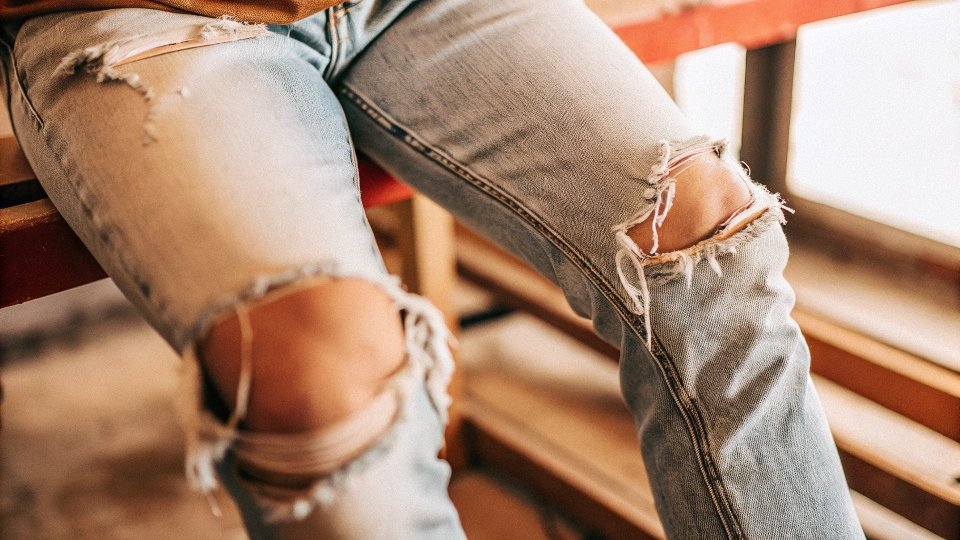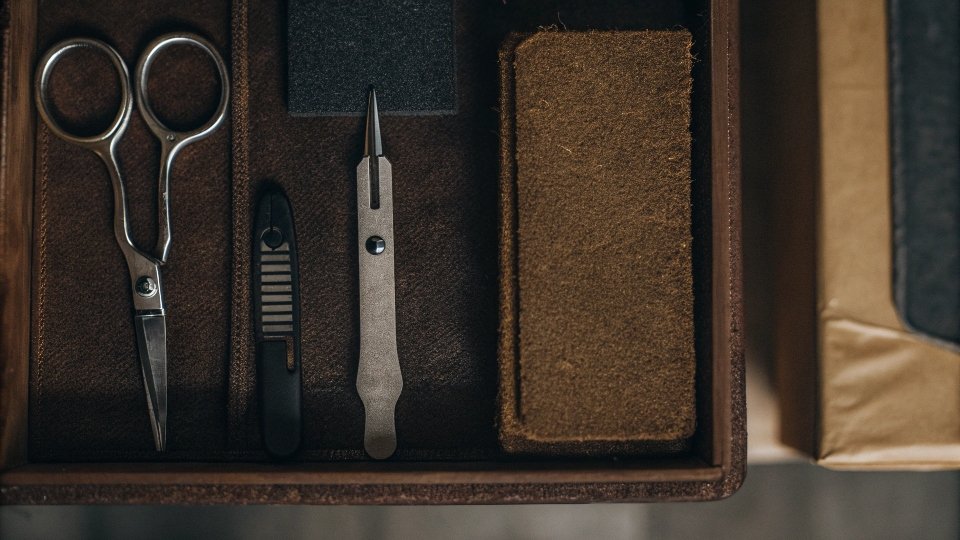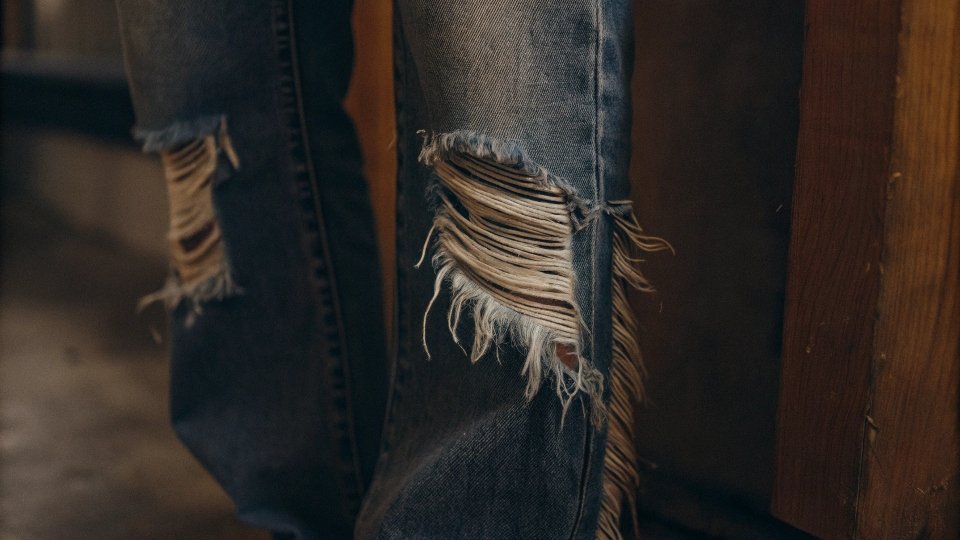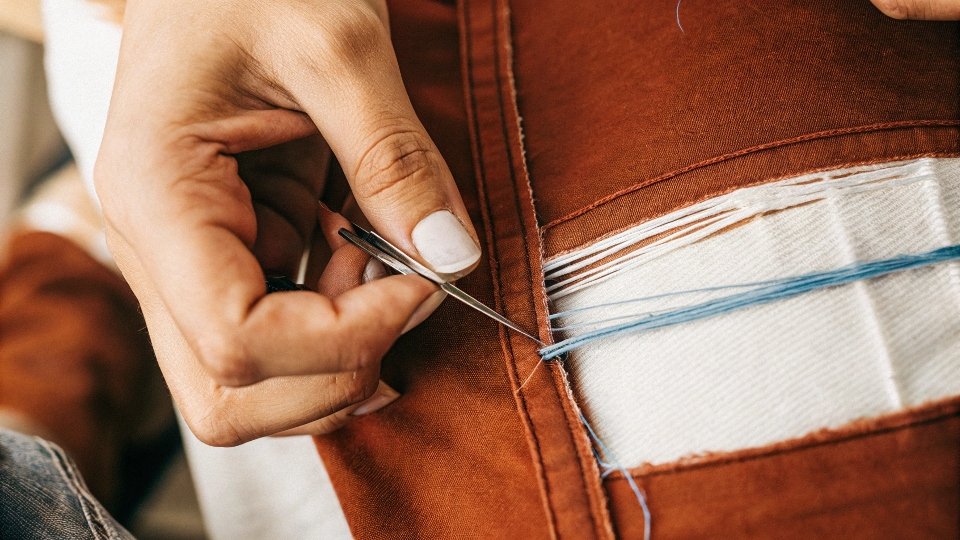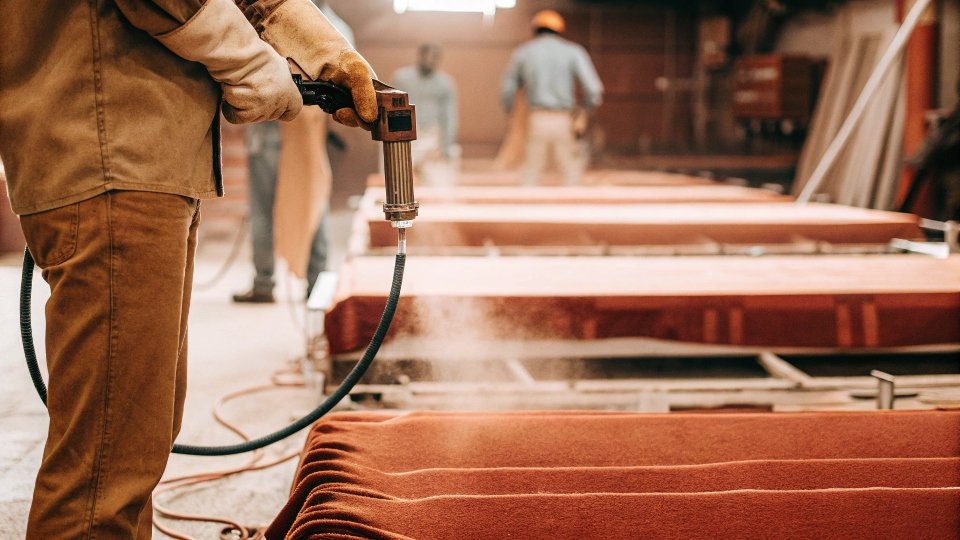You love the lived-in, edgy look of distressed jeans, but the ones you find in stores are either too expensive or ripped in all the wrong places. You want a custom look.
You can make distressed jeans1 at home using simple tools. Focus on creating natural wear2 by using sandpaper3 for fades, sharp scissors4 for cuts, and tweezers5 to fray the threads for an authentic, worn-in look.
In my 20 years running the DiZNEW denim factory, I've seen every distressing technique imaginable.
We use everything from hand-sanding6 to high-powered lasers to create the perfect worn look for designers like Dean. The goal is always to make the distressing look like it happened over years of wear, not in a few minutes.
The good news is you can achieve that same authentic look at home. The secret isn't about having fancy equipment; it's about understanding how denim wears down and then copying that process.
What tools do you really need to distress jeans?
You're ready to start your project, but you're not sure what you need. You're worried you'll have to buy a bunch of specialized tools just to make a few rips.
You don't need much. The most essential tools are things you probably already have: a pair of sharp scissors, coarse sandpaper, and a pair of tweezers. These three items can create almost any distressed effect.
The best distressing looks natural, so the best tools are simple. You are basically speeding up the process of friction and wear.
In the factory, we have workers who spend all day sanding jeans by hand to get a specific look. You'll be doing the same thing, just on a smaller scale. Start with a pair of 100% cotton jeans7. Denim with a lot of stretch in it has spandex threads that don't fray nicely and can look messy. Once you have your jeans, gather your small toolkit.
| Tool | Primary Use | My Pro Tip |
|---|---|---|
| Sandpaper | Fading and creating a soft, worn-in texture. | Use a medium grit (80-120) and rub it on areas that fade naturally, like thighs and knees. |
| Scissors/Knife | Making the initial cuts for rips and tears. | Always slip a piece of cardboard inside the leg before you cut to protect the other side. |
| Tweezers | Pulling individual threads to create frays. | This is the secret to making rips look professional instead of just like a hole. |
| Chalk/Pencil | Marking where you want to cut or fade. | Put the jeans on and mark where your knee bends. It's often higher than you think. |
What's the easiest way to fray your jeans?
You want that cool, unfinished look on your hems or around a rip, but just cutting the fabric looks too neat. You want it to look naturally frayed and a little messy.
The easiest way to create a great fray is to wash your jeans after you distress them. Cut the area you want to fray, pull a few threads with tweezers, and then let the washing machine do the rest of the work.
To understand fraying, you need to know how denim is woven. It's made of vertical blue threads (called the warp) and horizontal white threads (called the weft). A good fray happens when some of these threads are removed, leaving the others loose.
The washing machine is your best tool for this because the agitation tumbles the fabric and naturally loosens these threads.
Here is the simple process for a perfect frayed hem:
-
Cut It: Cut the hems off at your desired length. Don't worry about making it perfectly straight; a slightly uneven cut can look more natural.
-
Pick at It: Use your tweezers or your fingernails to pull out a few of the long, white horizontal threads along the new edge. This will start the process.
-
Wash It: Wash the jeans in a normal cycle. To increase the fraying, you can throw a couple of towels in with them. The friction will really help rough up the edges.
-
Dry It: Tumble drying will make the frays bloom and look even softer and more authentic. You can trim any overly long threads if you want a cleaner look.
How can you make ripped jeans at home that look natural?
You've seen DIY jeans8 with big, gaping holes that look like an accident. You want to create those cool rips where you see the white horizontal threads stretching across the opening.
To make a natural-looking rip, make two parallel horizontal cuts. Then, use tweezers to carefully pull out all the vertical blue threads between the two cuts, which will leave the horizontal white threads behind.
This is the single most important technique for getting a professional-looking result. Just cutting a hole in your jeans will never look right.
The magic is in preserving those white weft threads. This mimics how jeans tear naturally over a long period of time—the vertical warp threads break first from stress, exposing the stronger weft threads underneath.
Here is how you do it step-by-step:
-
Mark Your Spot: Put the jeans on and use chalk to mark the top and bottom of where you want your rip to be. A common spot is right across the knee.
-
Make Your Cuts: Take the jeans off and place a piece of cardboard inside the leg. Use sharp scissors or a box cutter to make two horizontal cuts based on your marks. Make them about half an inch to an inch apart.
-
Start Pulling Threads: This is the most time-consuming part. Use your tweezers to start picking out and removing all the short, vertical blue threads running between your two cuts.
-
Reveal the Rip: As you pull out the blue threads, the white threads will remain, creating that classic, store-bought look. You can then use sandpaper to rough up the edges a little bit before you wash them.
How is denim professionally distressed in a factory?
You know how to do it at home, but you wonder how big brands can make thousands of pairs of distressed jeans that all look the same. It seems impossible to do by hand.
In modern factories, denim is distressed using a combination of manual labor and high-tech machines. This includes hand-sanding for fades, industrial stone washing9, and powerful lasers that etch wear patterns onto the fabric with perfect precision.
Creating distressed jeans at scale is all about consistency and efficiency. While the principles are the same as your DIY project, our tools are much more powerful. At DiZNEW, we use several key methods.
- Hand-Sanding: For truly authentic-looking fades, nothing beats the human touch. We have skilled workers who use sanding blocks to rub the thighs, seats, and knees of jeans to mimic natural wear. It’s labor-intensive but creates the best result.
- Stone Washing: This is a classic method. We put the jeans in giant washing machines with pumice stones. As the machine tumbles, the stones rub against the denim, softening it and removing color for an all-over, vintage feel.
- Laser Distressing: This is the high-tech solution. A powerful laser controlled by a computer literally burns away the top layer of indigo dye. We can program it to create any pattern, from subtle whiskers on the hips to complex rips. It's incredibly fast, perfectly consistent, and uses no water, making it a much more sustainable option. What might take a worker 15 minutes to sand by hand, a laser can do in 90 seconds.
Conclusion
Distressing your own jeans is the best way to get a custom look that fits you perfectly. Just start slow, use simple tools, and focus on copying natural wear patterns.
-
Explore this resource to learn step-by-step techniques for creating your own custom distressed jeans. ↩
-
This link will provide insights into techniques that mimic natural wear for a more authentic look. ↩
-
Find out the ideal sandpaper grit to achieve the perfect faded look on your jeans. ↩
-
Discover the best scissors for making precise cuts in denim for a professional finish. ↩
-
Learn how to effectively use tweezers to create authentic frays in your jeans. ↩
-
Find out how hand-sanding creates authentic fades and wear patterns on jeans. ↩
-
Discover why 100% cotton jeans are ideal for creating a distressed look. ↩
-
Explore various DIY techniques to customize your jeans for a unique look. ↩
-
Explore the process of industrial stone washing and its impact on denim quality. ↩

